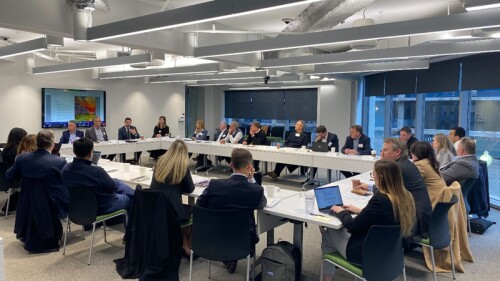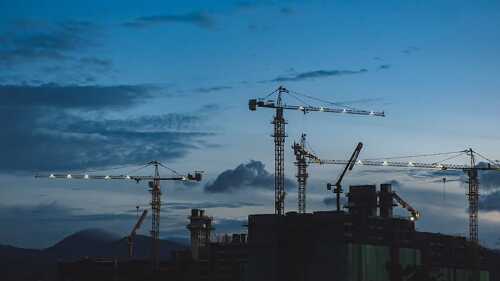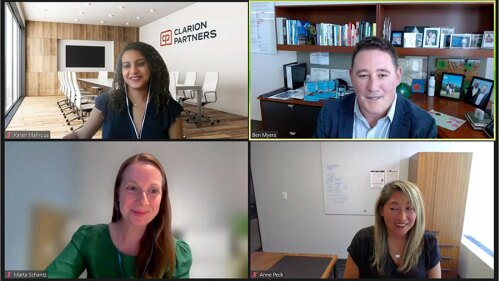Buildings use 40 percent of all energy consumed in the United States. To significantly reduce this requires retrofitting existing buildings, since new buildings represent a mere 0.5 percent of this stock each year. Housing for seniors is often overlooked in this regard, though it has as much need of retrofits as any building type. With more than 50,000 senior housing developments of various kinds across the country, the opportunities for energy reduction and financial savings are considerable. Moreover, in addition to financial savings, a successful retrofit brings considerable health and quality-of-life benefits to the nation’s rapidly growing senior population.
Retrofitting existing senior housing developments can significantly reduce their operating costs, and provide a short-term payback on the investment required. A study by the Northwest Energy Efficiency Alliance (NEEA) and the New Buildings Institute (NBI) of nine retrofits published last year, “A Search for Deep Energy Savings; NEEA’s Study of Existing Building Energy Efficiency Renewals,” details how owners were able to achieve energy savings of 50 percent or more and reduce the retrofit cost using various kinds of government, utility, and tax incentives. Unfortunately, while it is hard to accurately predict “payback” periods as there are insufficient data on particular applications in particular locations, there is still plenty of evidence from specific projects to know that green retrofits can produce an attractive financial return on the investment.
The NEEA study also discusses “soft” benefits available, some of which drop to the bottom line. This is an especially important area for owners of senior housing properties. Studies conducted by AARP (formerly known as the American Association of Retired People) and others show that older Americans have a high degree of environmental awareness, desire environmentally safe products, and understand the health and other benefits of green properties. For this reason, branding a property as green can offer a competitive advantage over other senior properties that translates directly into higher absorption and occupancy rates and lower staff turnover (Skanska, for instance, reports that its Leadership in Energy and Environmental Design (LEED) Platinum New York headquarters experienced a 16 percent drop in absenteeism after occupying the offices. A well-designed retrofit can also result in better health outcomes for residents and a more positive attitude among residents and staff, leading—among other things—to better word-of-mouth advertising.
Another “soft” benefit of a green retrofit reported in the NEEA study, and confirmed by the experience of many real estate and financial advisers, is that more investors today are looking for green investments. While investors may be unsure of the actual “hard” bottom-line benefits, they are concerned that properties that are not green will become uncompetitive, leading them frequently to choose green properties to invest in over nongreen ones.
Planning the retrofit. The first step in considering a retrofit is to develop an integrated plan, working with the architects, engineers, contractors, and finance experts. It is also important to include those who will operate the new systems, those who work in the building, and even the residents themselves, all of whom have a significant impact on achieving the designed savings.
Lighting is often an area in which there is a quick payback and is also a good example of what can be accomplished through a fully integrated approach. This is particularly important for senior housing, as aging eyes need more light. Lighting technology is evolving at a startling pace—almost weekly, as a controls expert at Cisco put it. To fully benefit from these advances, though, requires considering installing not just new lights but also new technologies, such as wireless and computerized controls, to run them.
New lighting may also involve redesigning the existing windows, installing light shelves and wells, and adding automatic controls on window coverings. This reduces the amount of energy needed for artificial light. Equally important, it increases daylight that, according to a growing number of studies, can enhance the productivity of the staff as well as the overall mood and health of residents. By combining a number of elements into a complete lighting program, it is possible to achieve short payback periods while providing a better, healthier quality of light to the staff and residents.
Other areas with relatively short payback periods include reducing drafts from doors and windows and new, highly efficient HVAC systems. New energy-efficient windows installed as part of an integrated lighting retrofit, combined with automatically controlled shades and new deciduous trees planted on the south and west sides of buildings, can reduce the size of the new HVAC system required. Once again, looking at the various systems and parts of the building as an integrated whole uncovers areas of savings that are not evident when looking at the parts separately.
Post-retrofit commissioning. Once the physical aspects of the retrofit are completed and the new equipment is installed, the next step is critical: the building must be commissioned. This means that the systems must be tuned and everyone involved in working in and operating the building, and even the seniors living there, must be trained to use the new systems as designed.
Training alone, though, is insufficient; everyone must be invested in the goals of operating the building and its systems as efficiently as possible consistent with convenience and comfort. This is one reason why maintenance personnel, staff, and residents need to be involved from the beginning in designing the retrofit. They are more likely to run the building as intended if they have helped design the retrofit and feel they own the goals from the beginning.
Human behavior affects the efficiency of a building by anywhere from10 to 40 percent by some estimates. The best, most efficient building systems are of little value unless those who operate them want to use them properly and know how to do so. Studying ways to create cultures that support the efficient operation of a building is a recent development. One effort to better understand the human element in building operation and use is the Climate, Buildings and Behavior Project, sponsored by the Garrison Institute and cosponsored by the ULI New York District Council. Over the past several years, it has developed a growing library of stories of success and challenge in changing cultures and creating green behaviors in buildings. The Project is also compiling reports on the rapidly evolving research into behavioral economics and other fields related to human behavior.
The point of all this is that whenever a senior property is in need of an update whether major or minor, or a property needs to be repositioned in the market, a careful focus on all aspects of sustainable, energy-efficient design is important to achieving long-term financial stability. Equally important are the human benefits of a better quality of life for the residents, central to the core mission of any senior property, and a better working environment for the staff. Happily, these can be achieved while improving the property’s financial stability at the same time.
ULI–the Urban Land Institute




